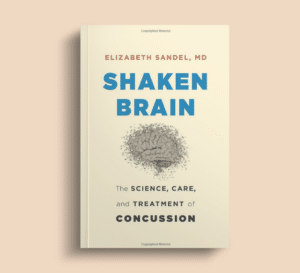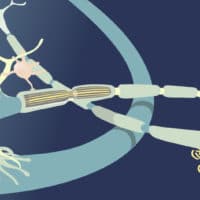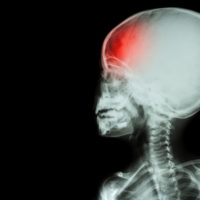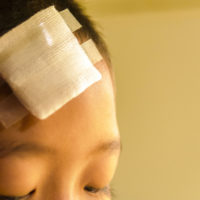Abuse: A Leading Cause of Brain Injury in Children
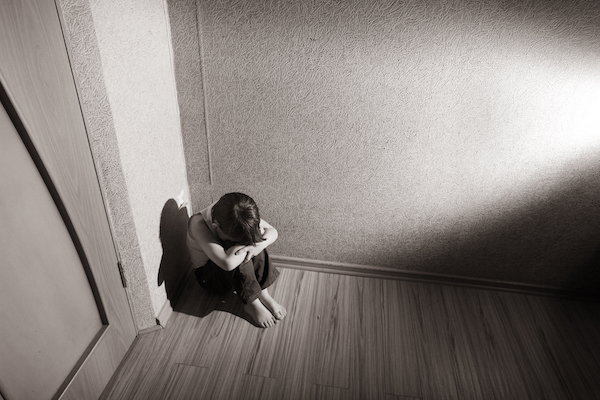
Kids and brain injury: for most people, this connection conjures images of sports-related concussions. But child abuse is a top cause of TBI-related emergency room visits, hospitalizations, and deaths among children of all ages, and the #1 cause of brain injury-related deaths among children ages 0-4 in the United States. Abuse is one of many adverse childhood experiences (ACES), i.e., traumatic events that contribute to a person’s mental and physical health and are linked to educational and economic outcomes in adulthood.
At least 1 in 7 children in the US have experienced child abuse and/or neglect in the past year. And in 2019, 1,840 children died of abuse and neglect. These numbers are undoubtedly conservative because they include only cases where the injury was recorded and classified as abuse. Many abuse-related brain injuries and other injuries in children are misclassified (as falls or trauma from other children, for example), so the real numbers are likely much higher.
These sobering facts drive home the point that sports-related concussions represent only one cause of brain injuries in children. And unlike motor vehicle crashes and falls, abuse isn’t an accident. Deaths and injuries caused by abuse are 100% avoidable.
Abusive Head Trauma Is a Brain Injury
Pediatric abusive head trauma (AHT), a term that includes “shaken baby syndrome,” is a physical assault that results in a brain injury to a child. It only takes a few seconds of violent shaking to do permanent damage. Blunt impacts to the head also commonly cause non-accidental brain injury in children and may be caused by punching, kicking, and striking either with the hand or an object, or throwing the child against a hard surface. Suffocation or strangulation may lead to brain injury because of hypoxia (lack of oxygen to the brain).
AHT typically occurs when a parent or caregiver becomes angry or frustrated, often because of a child’s crying, especially during long periods when nothing seems to calm the child. AHT involving violent shaking or a blunt head impact can result in brain or retinal bleeding (in the back layer of the eyes). The consequent brain injuries often include unilateral or bilateral subdural hemorrhages and diffuse brain injury. There is often evidence of other trauma such as bruising and rib and long bone fractures, so the more inclusive term, “shaken impact syndrome,” better captures the range of abuse involved. Infants younger than one are at the greatest risk for brain injury from AHT.
Physical trauma to a child’s head or shaking of the brain inside the head can lead to swelling and bleeding that causes death or disability. Those who survive may face lifelong challenges, including seizures, learning disabilities, paralysis, blindness, hearing loss, or other disabling conditions. Even milder cases of abuse can cause permanent changes in personality and behavior.
Not Just Abuse, But Also Neglect
Neglectful supervision, a category separate from abuse, can also lead to brain injuries in children and includes circumstances when a caretaker isn’t paying attention or doesn’t provide a safe environment or take precautions. A child may fall out of a highchair, down the stairs, or out of an unsecured window.
Diagnosis can be challenging in abuse and neglect cases. For a discussion of some of the complex issues related to AHT and shaken baby syndrome, see Shaken Brain: The Science, Care, and Treatment of Concussion — Chapter 8 (“Close to Home”).
Can Abusive Head Trauma Be Prevented?
The 2016 report from the National Center for Injury Prevention and Control on Preventing Child Abuse and Neglect report (find the PDF here) recommends strategies at the individual and community level to help prevent abuse and neglect that leads to TBI in infants and children. There’s also much information on the topic here from the US Department of Health & Human Services.
When I interviewed Dr. Maya Evans, physiatrist at Shriners Hospital for Children – Northern California in Sacramento, we discussed children and concussions. One of the many things we talked about was abuse as a cause of TBI in children. You can find that interview here.
I also discussed this topic in my interview on Mom Talk Radio here.
You Might Also Like
Concussions in Young Children
Dr. Maya Evans is a pediatric physiatrist who treats children and adolescents with brain injuries, including concussions. She discusses the special needs of these populations for expert care and also advocates for prevention strategies.
Dr. Sandel Discusses Concussion Risks for Children
Dr. Sandel discusses concussion risks and prevention strategies for children on Mom Talk Radio. She talks albut diagnosis, recovery, and talking to kids about concussion. She has lots of advice about nursery products and playground injuries, and suggestions about websites for more information.
Concussion in Young Children: What You Need to Know
An early childhood teacher talks with Dr. Sandel about about concussion in young children. What causes it? What do we need to look for? And how can we help during the recovery process?
How Long Will It Take for My Child to Recover from a Concussion?
Children can experience a range of symptoms after concussion. They require individualized treatments and strategies for returning to activities and to school. A physician with training and experience in treating concussions must provide early interventions and follow-up, regardless of how long recovery takes.
A Neuropsychologist is a Brain Injury Expert
Neuropsychologists are psychologists with training in brain functioning. They offer evaluations, education, and counseling for people with brain injuries. Health can educators help, too, because education is a key part of concussion care.
Top Causes of Concussion in Children and Adolescents
When we think of “youth” and “concussion,” the first thing that likely comes to mind is a teenager engaging in a high-risk activity such as football, soccer, or snowboarding. But not all youth brain injury results from these risky activities. Of the millions of concussions reported by emergency rooms every year, figures put concussions related to sports and recreation at just 30% – so 70% of concussions result from other causes.
Keep up to date
Get updates on the latest in concussion, brain health, and science-related tools from Dr. Elizabeth Sandel, M.D.
By clicking SIGN UP, you agree to receive emails from Dr. Sandel and agree to our terms of use and privacy policy.
Get the book!
